Kayaks, penguins, and a dream trip to the end of the world

I never seriously thought I’d make it to Antarctica. As a kid, I’d linger over National Geographic photos—icebergs, penguins, endless stretches of white—and think how incredible it all looked. But actually going? That felt like the kind of thing other people did.
Still, the idea stuck with me. I figured if it ever happened, I’d probably go solo—most of my friends weren’t exactly saving up to vacation with penguins. But somewhere along the way, I stopped treating it like a far-off fantasy. If I really wanted this, I’d have to make it happen. So I did.
When my sister Jen told me she wanted to go too—and that she had the time and means—I said, “Let’s do it.” We booked a trip with Lindblad Expeditions about 18 months in advance and made monthly payments. Her friend Cindy ended up joining us, too.
It wasn’t cheap, but planning it that far out gave us time to make it work—and fully commit to the dream.
The trip began in Buenos Aires, where we met the Lindblad representatives. After a day or two in Buenos Aires, we flew about three and a half hours to Ushuaia—the southernmost city in the world—where we boarded the National Geographic Explorer later that evening, ready to begin the journey that would take me to my seventh continent (let me pinch myself).

Our cabin was small but had everything we needed: two twin beds (surprisingly comfortable), nightstands, a desk, two small closets, and a compact bathroom. We had a little port window overlooking the sea, but what I noticed first was the bright orange Lindblad parka folded neatly on my bed. I slipped it on right away—it fit perfectly. Suddenly, I felt like a real explorer.
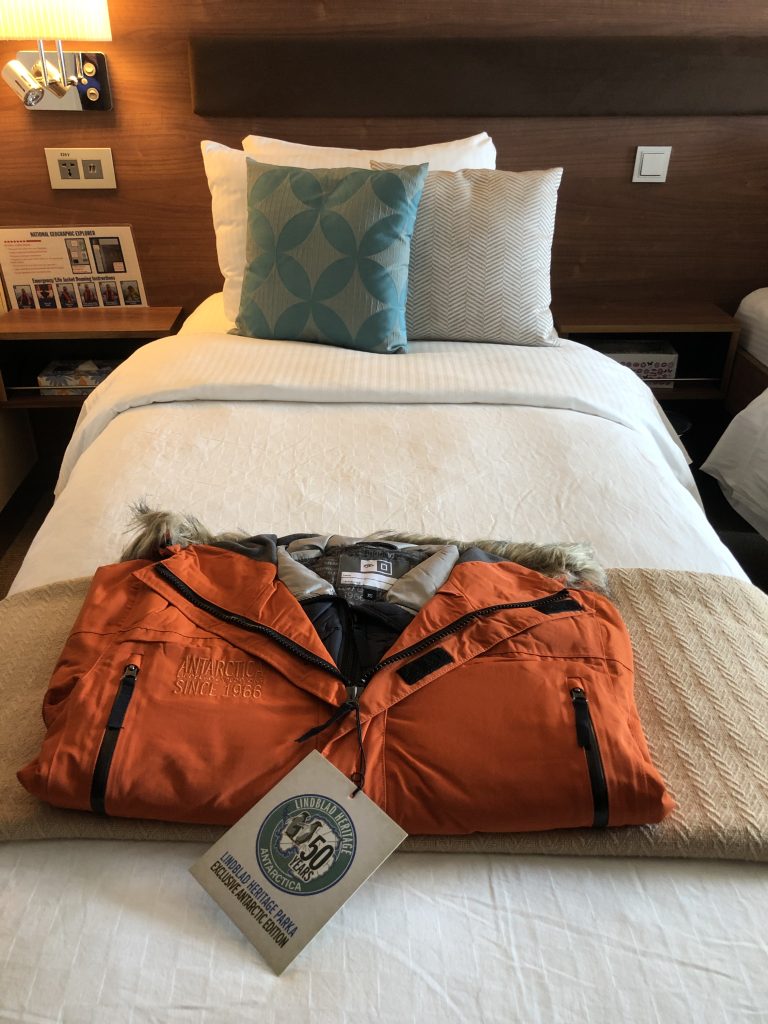
After we set sail, we had a safety drill and were introduced to the expedition team. About 150 passengers were split into six groups to help keep gear storage and Zodiac launches smooth in the lower-deck mudroom. Despite the number of people, the ship never felt crowded—there were plenty of cozy nooks to spread out.
Meals were plentiful: buffet-style breakfasts and lunches, and sit-down dinners with options for meat, fish, or vegetarian dishes. Wine and beer were included with dinner (two glasses max), and afternoon tea and pre-dinner appetizers were offered daily. Tea, coffee, and soda were always available.
Each morning, our Expedition Leader, Adam, woke us with a chipper “Good morning, good morning!” over the PA system (my sister Jen even recorded one—such a fun memory). We’d return from breakfast to a printed itinerary on our beds. Plans could shift depending on weather and sea ice, but the spirit of adventure was always alive.
The ship had a library, gym, and daily talks from naturalists, scientists, and photographers. One of my favorite spots was the Chartroom on the Bridge Deck, where maps showed our daily course.
A large chart table displayed our route day by day—each morning, the crew would mark our current location and planned stops. I checked it constantly. Watching our tiny red dot crawl from the Drake Passage into the bays and islands of the peninsula made the trip feel even more epic—and real.
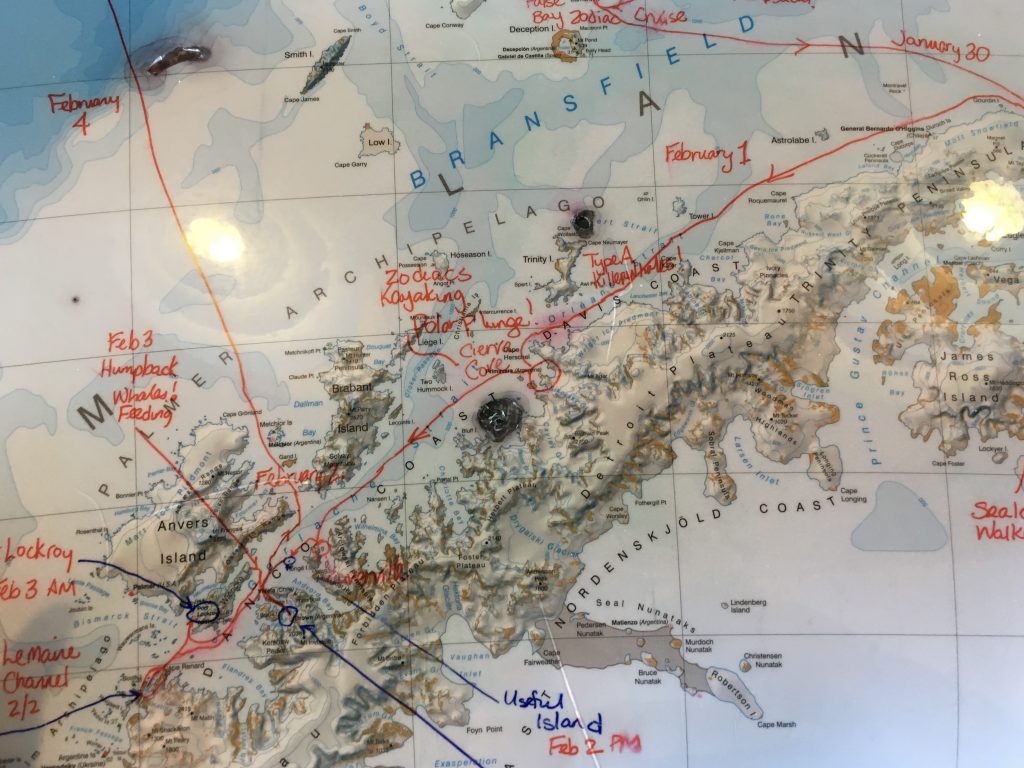
Still, nothing beat standing on deck—watching icebergs drift past or spotting whales and seabirds in the icy air. Pure magic.
The Drake Passage is legendary—for better or worse. The first and second days were all open sea, which gave us time to settle in, explore the ship, and attend some of the onboard lectures and talks. By the third day, excitement started to build—we spotted our first signs of land as we neared Livingston Island in the South Shetland Islands.
That afternoon, while one group went kayaking, Jen, Cindy, and I—along with just a few other passengers—boarded a Zodiac for our first real excursion. I saw my first leopard seal, sprawled on a hunk of ice. I’d read they were aggressive hunters, but this one just looked like it was enjoying the sun.

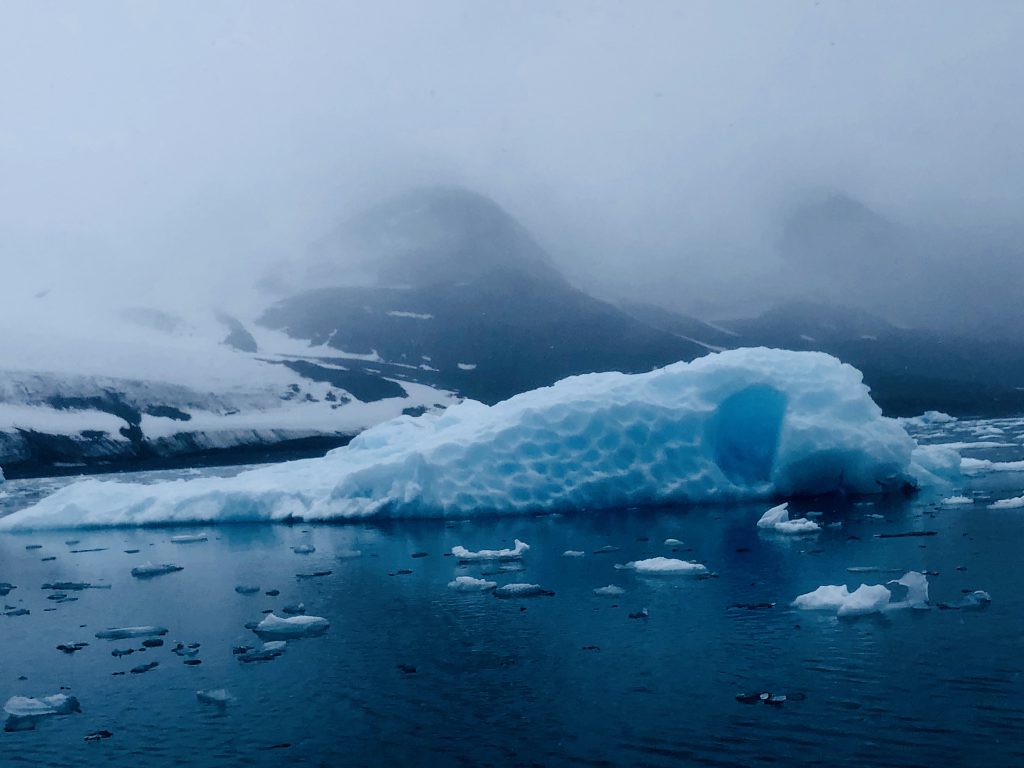
No other boats in sight—just ice, mountains, and pure silence. It was surreal: being out there with only a few others, surrounded by frozen wilderness and stillness. I felt small, lucky, and completely in it. Exhilarating doesn’t even cover it.
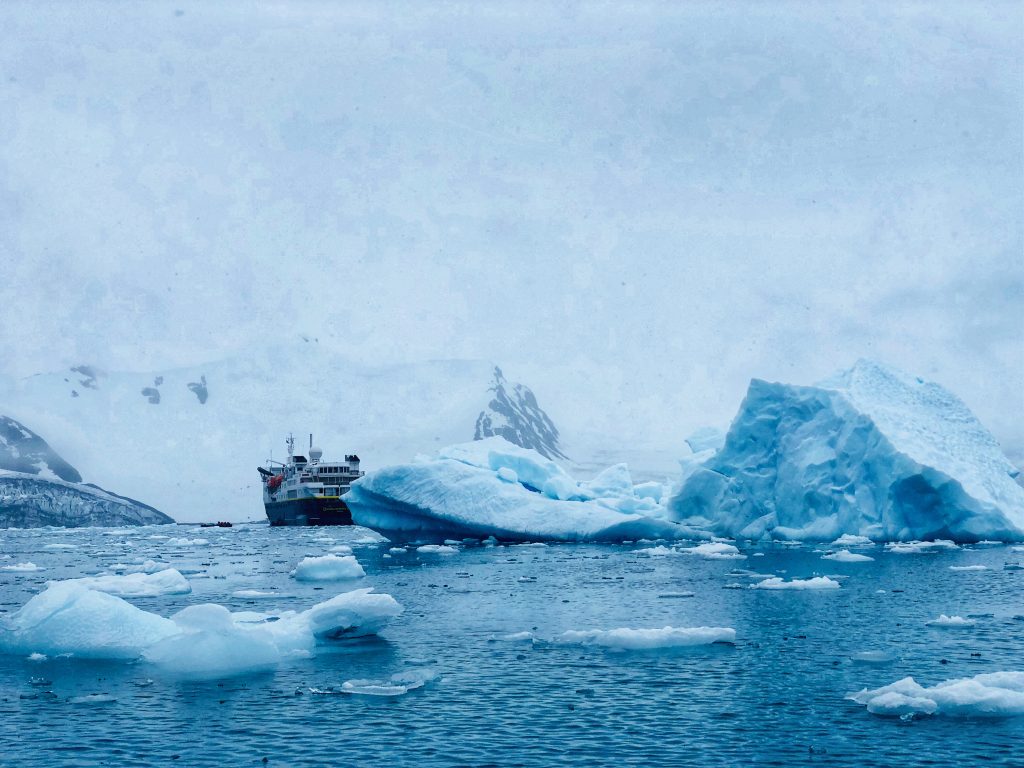
Day four brought one of the biggest highlights: Paulet Island.
After breakfast, we headed out in Zodiacs to visit the Adélie penguin colony—over 100,000 pairs, from what I’d read. You could see them swimming and “porpoising” through the water, leaping like little torpedoes.
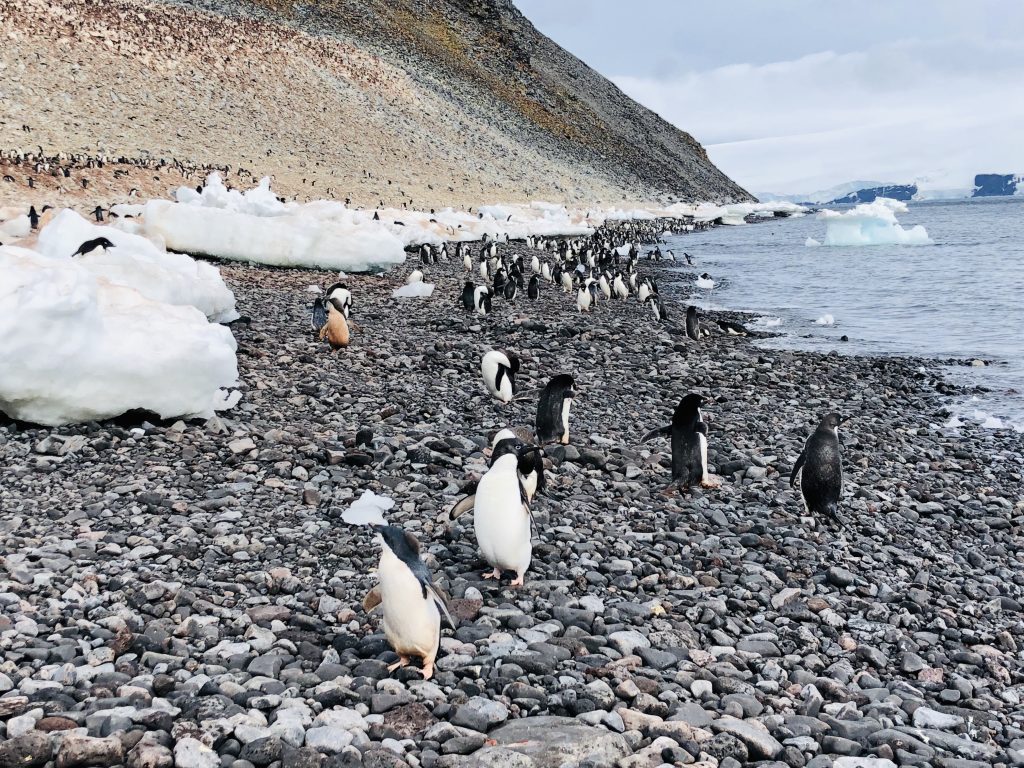
On land, they waddled, squawked, and generally went about their noisy, chaotic business. What surprised me most? How messy they were. Their white bellies were streaked with pink, and even the snow had a weird blush to it. At first, I thought it was mud. Spoiler: it wasn’t. It was poop.
Here’s why: Adélie penguins eat a ton of krill, which feed on phytoplankton rich in a pigment called astaxanthin. That pigment gives krill their reddish-pink color—and it passes straight through the penguins. So yes, the pink snow? That’s what happens when tens of thousands of krill-fed penguins leave their mark.
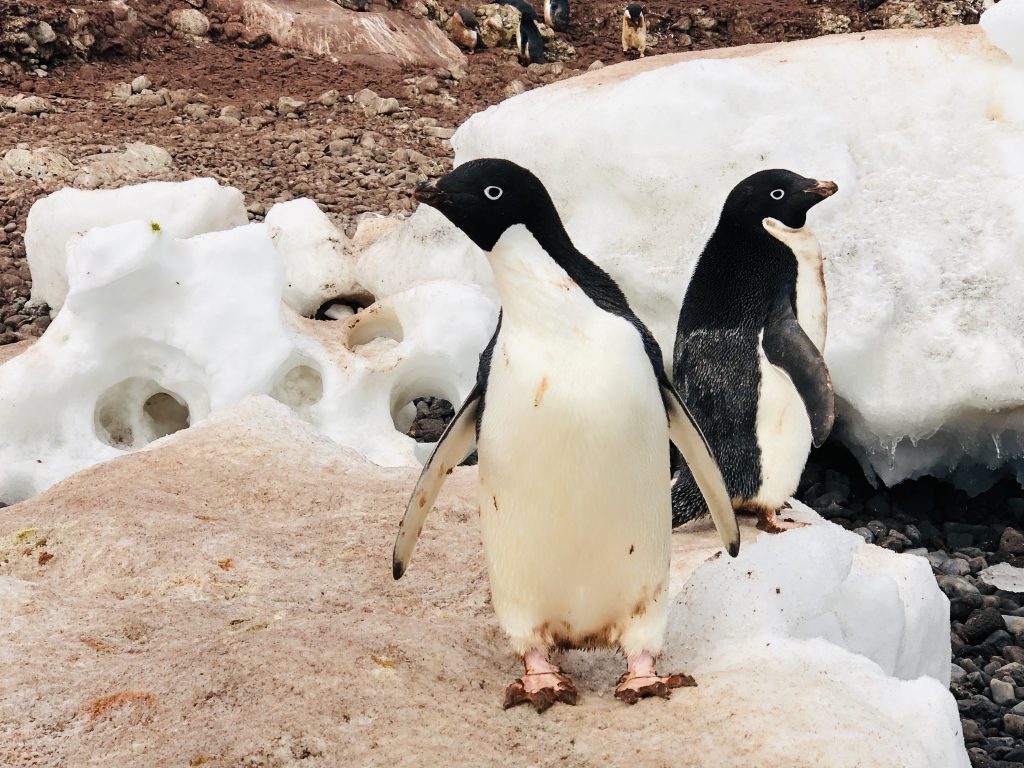
Weird? Definitely. Gross? A little. Fascinating? Absolutely.
We spent about an hour on Paulet Island before hopping back into the Zodiac and returning to the ship to continue on. That landing—on Paulet Island, surrounded by Adélie penguins and pink-streaked snow—was where I officially set foot on my seventh continent.
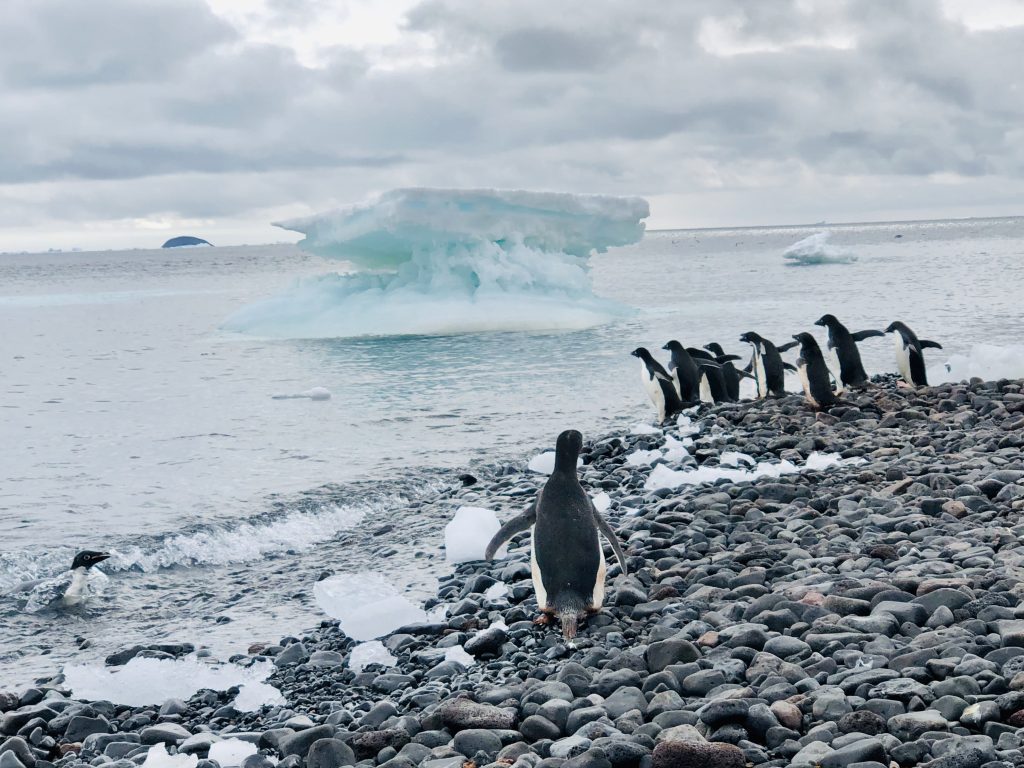

Later that afternoon, we made our second landing—on the rocky shoreline near the Trinity Peninsula. It was our first encounter with gentoo penguins: orange-beaked, white-striped, and stinking cute.
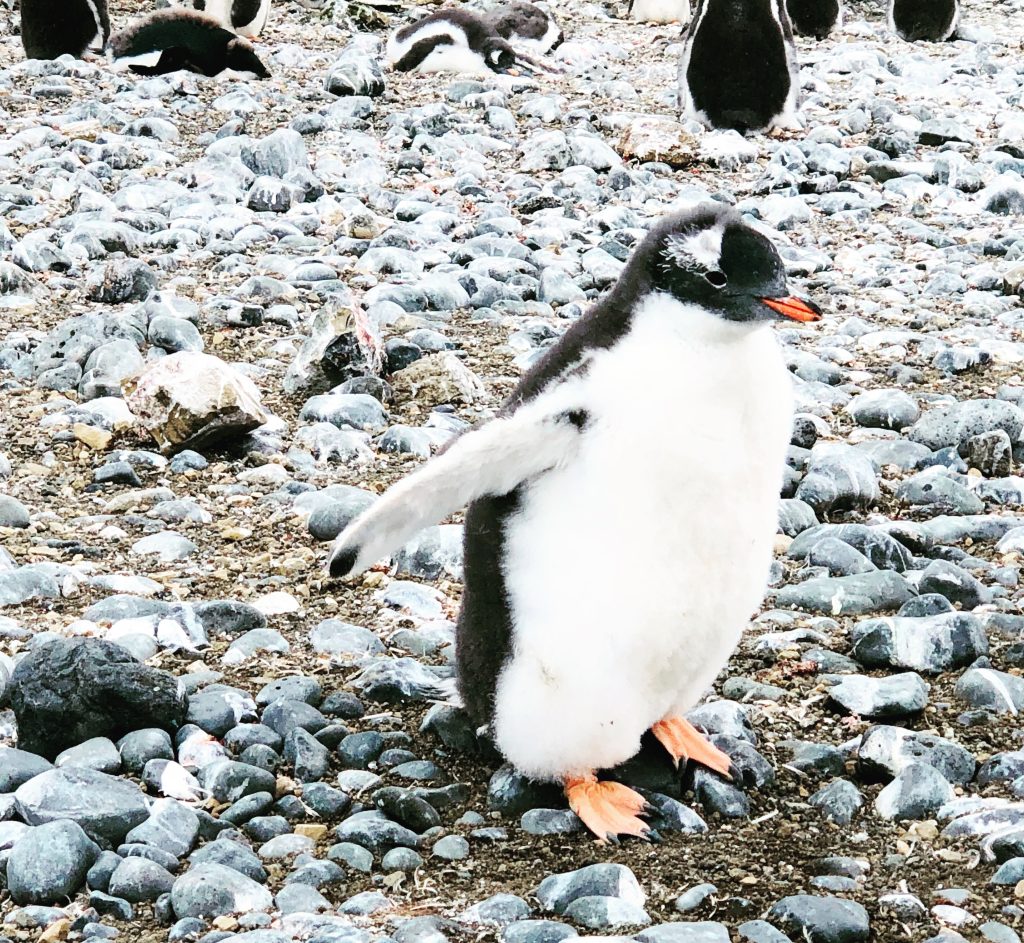

The next day, we landed on Snow Hill Island—remote, windswept, and almost entirely ours. Emperor penguins were long gone (they head inland early in the season), but just being there felt like a privilege. The landscape was different from the icy shores we’d seen earlier—expansive, brown, and windswept with streaks of snow dusting the rocky ground.
A black research hut stood alone in the distance, adding to the feeling that we were visiting a place few ever get to see. We wandered along the shore and up into the hills, taking in views of the coast and surrounding glaciers. It felt like another planet—vast, quiet, and hauntingly beautiful.
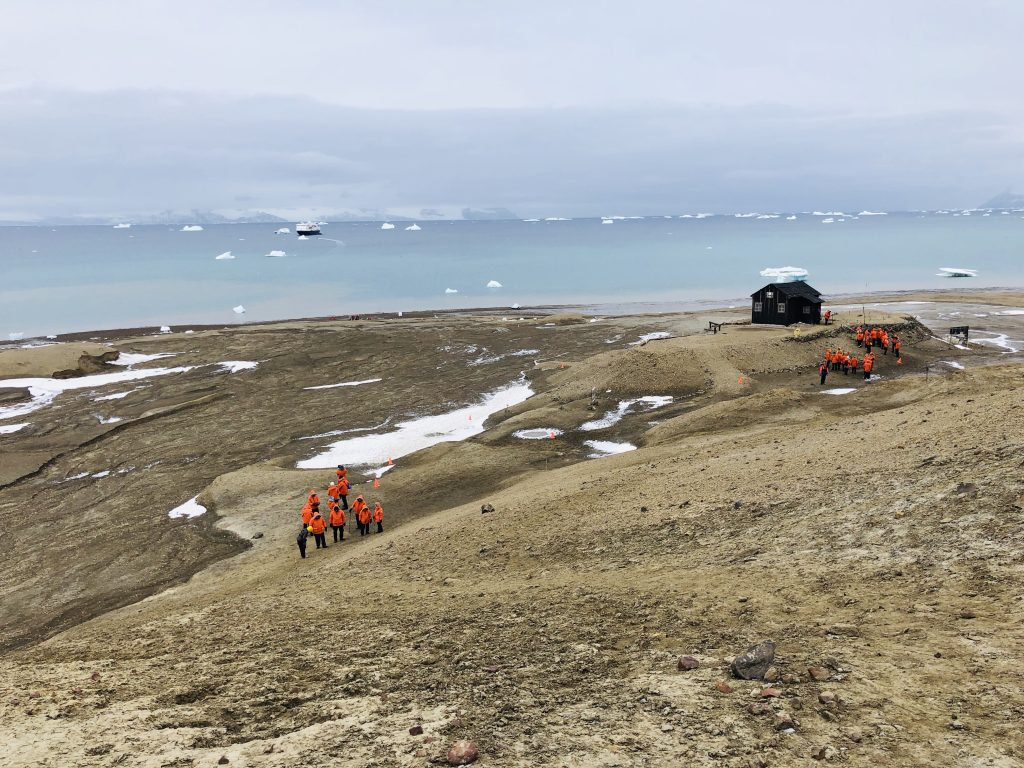

Later that day, near Rabot Point on James Ross Island—we got to walk on sea ice. First, the crew went out with poles and safety gear to test the surface.
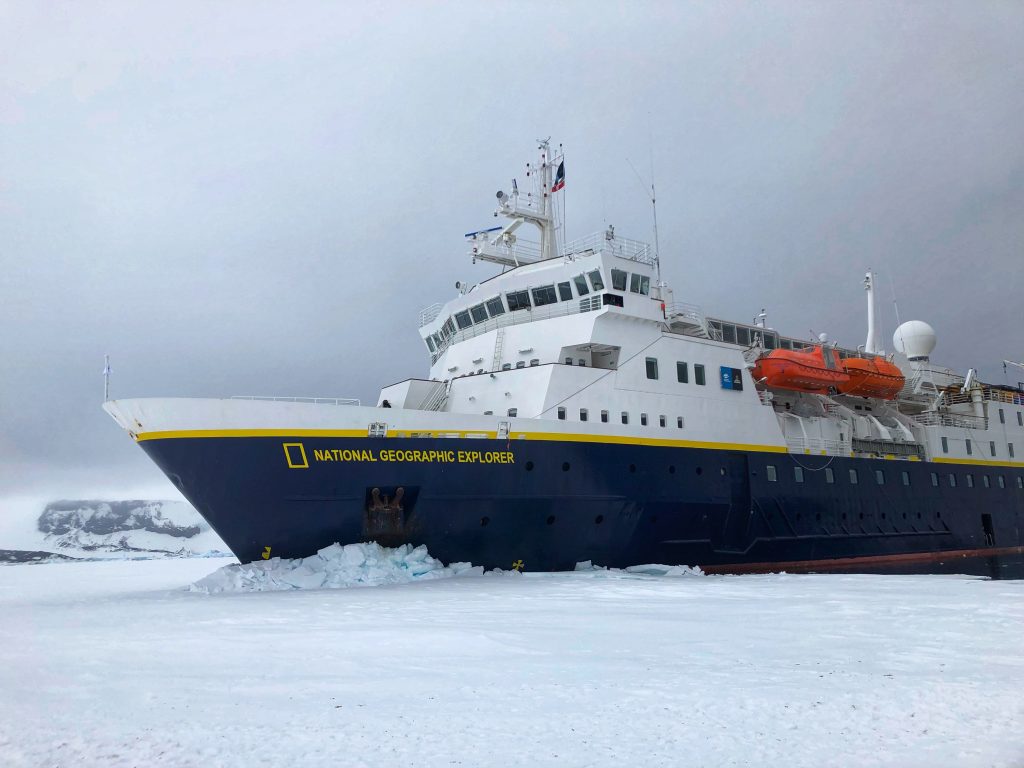
Only after they deemed it safe did they let us off the ship. Stepping off the ship and onto a frozen slab of ocean was one of the most unreal things I’ve ever done. My boots crunched against the fresh ice, and I kept thinking—I am walking on the sea which felt both fragile and enormous. It really was incredible— And yes, I know “incredible” is overused—but this time, it fits.
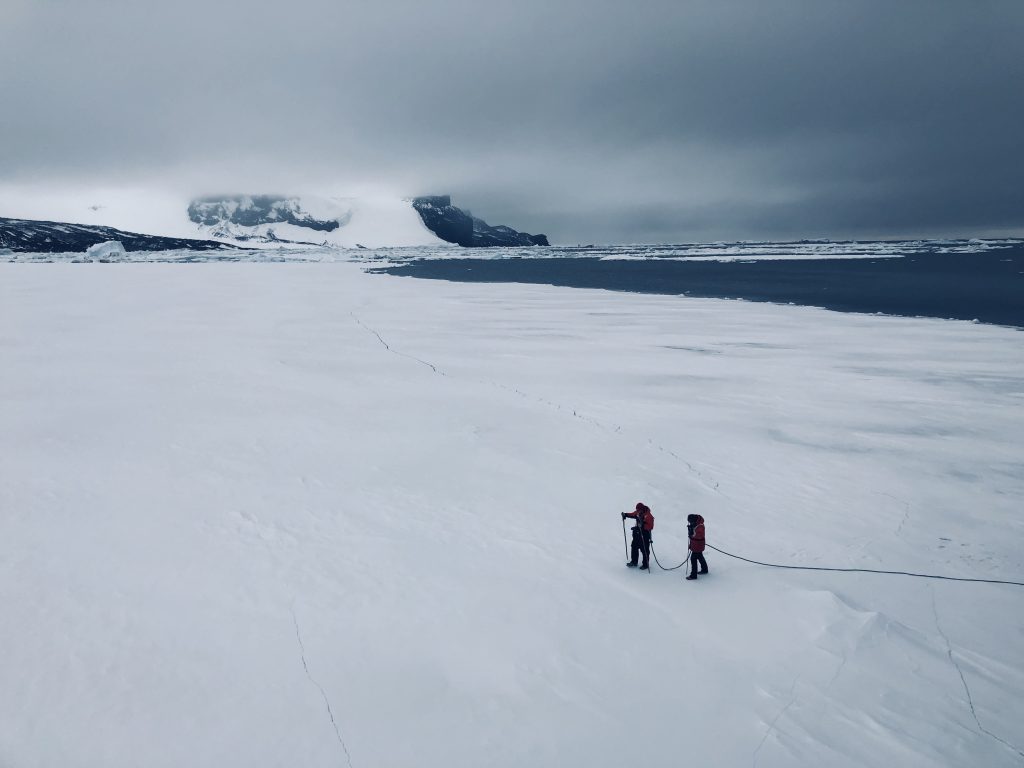

The following day brought another favorite: kayaking. Jen and I shared a double kayak and paddled through a world of ice and glassy still water. The sky was clear, the sun reflected off the snow-dusted peaks, and the icebergs—sculpted, brilliant, and strangely delicate—floated silently around us.
We even saw a whale not far from our boat. Honestly, it was the most beautiful place I’ve ever kayaked. I would’ve stayed out there all day if they’d let me.

Later that afternoon, we were back in the Zodiacs again—this time just exploring, drifting between icebergs and soaking in the stillness, marveling at all the different types of icebergs floating around us.

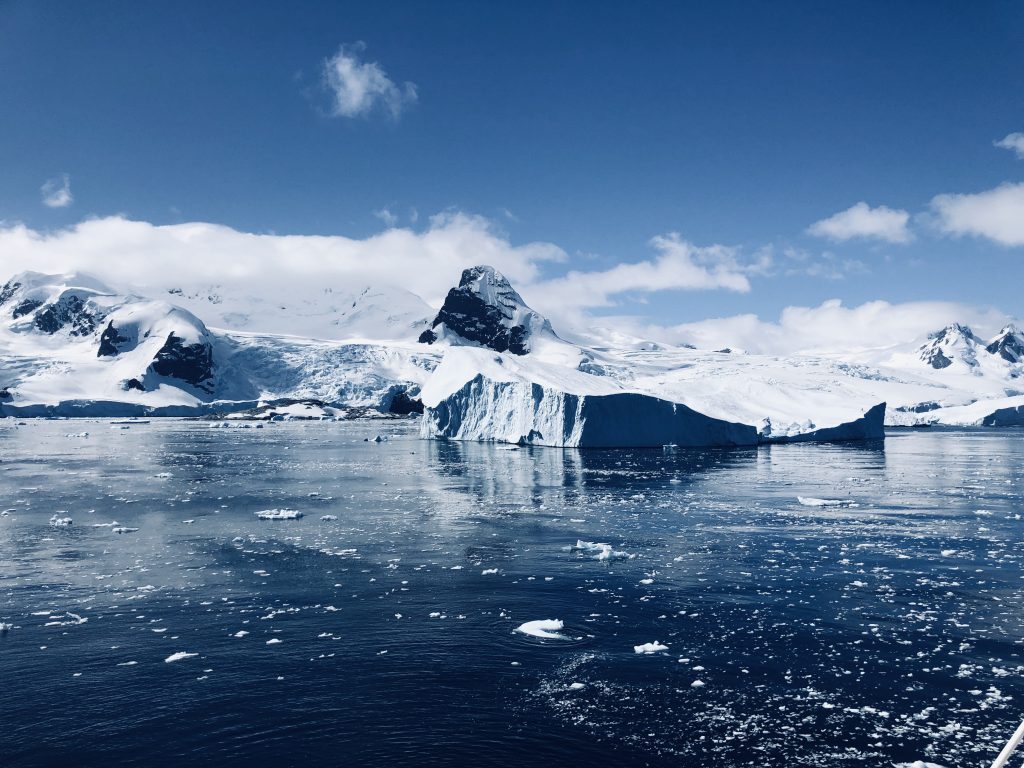
Then came one of the more daring moments of the trip: the polar plunge.
I was scared. Really scared. But how could I not do it?
I stepped out in my swimsuit, heart racing. When they called my name, I walked to the edge, paused for half a breath—and jumped. It was like plunging into a chest full of ice cubes. My whole body locked up. But then I climbed out, wrapped in a robe, and accepted a mystery shot of liquor from the crew. I still don’t know what it was. I just remember feeling instantly warm, happy, and like I’d earned something.
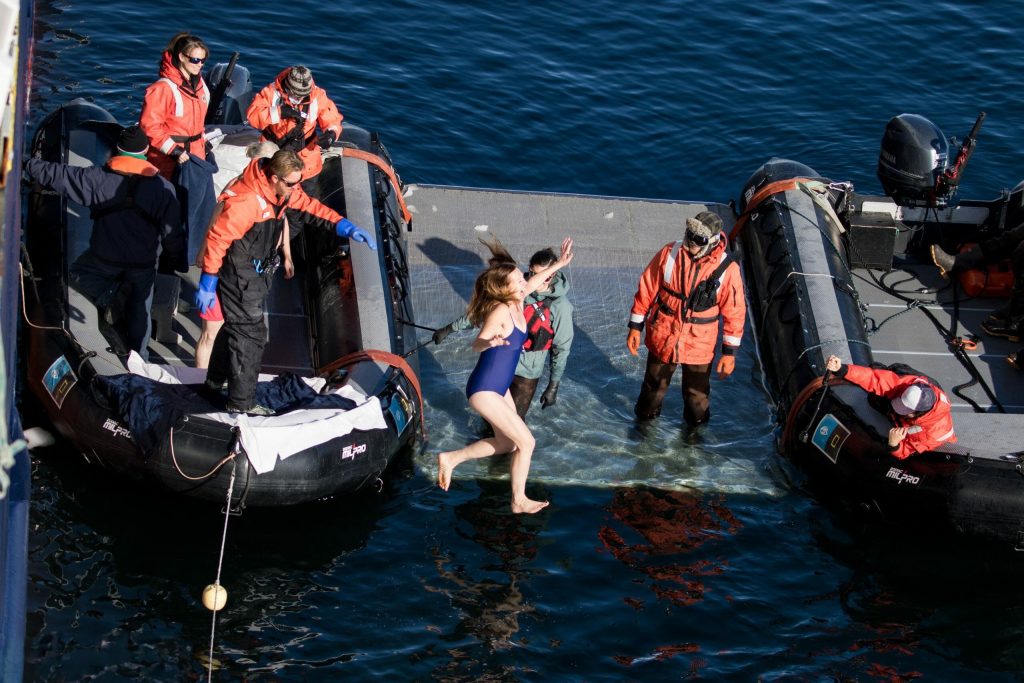

Unforgettable.
Later, we cruised in Zodiacs again, soaking in every last view. Every day just got better.

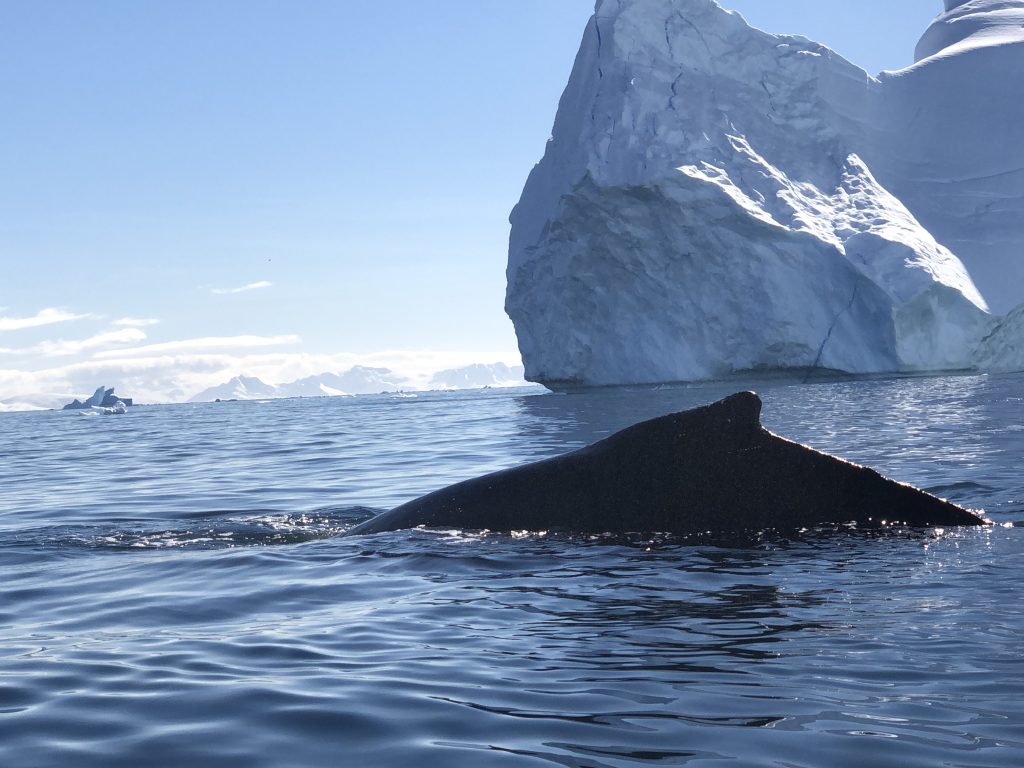

Day 7 brought us to Cuverville Island, one of the most beautiful places we visited. We were greeted by more gentoo penguins—nesting, squawking, and flopping onto their bellies to slide across the snow. The backdrop was unreal: cliffs of ice, blue shadows shimmering in the cracks, and sculptural bergs drifting past like floating art installations.
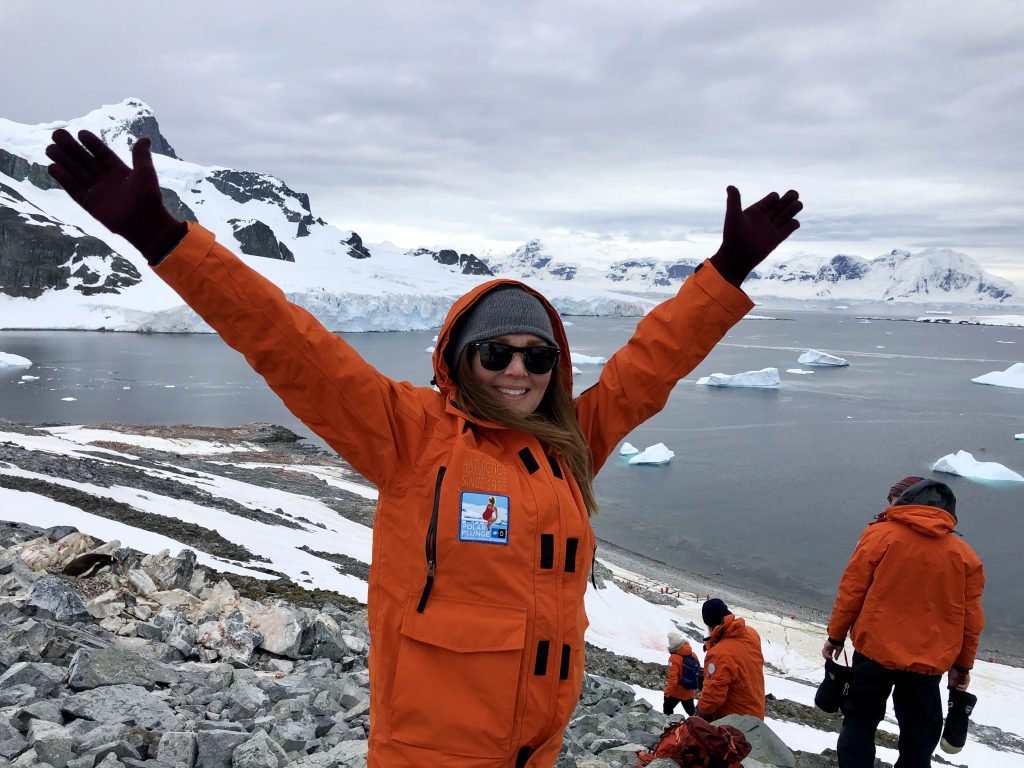
We went kayaking again, this time under skies so still and clear it felt like the world had gone quiet for us. We paddled among bergy bits and growlers, each one a different shape—some glowing from within like they were lit up by some magical blue fire. Honestly, I didn’t want to leave.
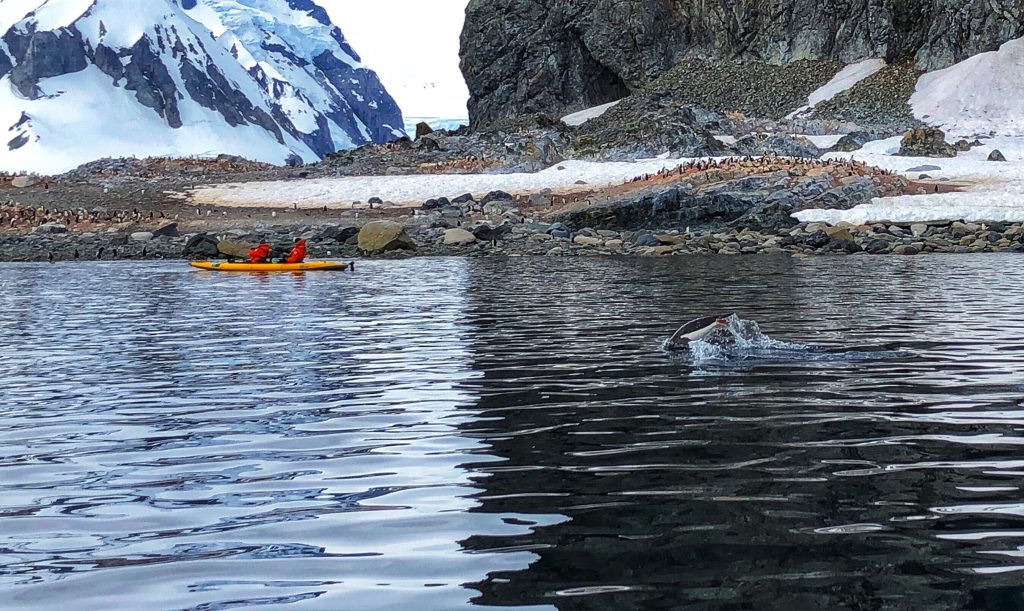


We left Cuverville Island and made our way toward Useful Island. As we neared, the ship anchored and we headed toward shore in the zodiacs. Along the way, we spotted a seal lounging on an iceberg, surrounded by icebergs of every shape and size—some streaked with brilliant blue. We motored slowly among them, taking in the stillness and the strange beauty of this floating sculpture garden.
Useful Island was also where I first got a look at another type of penguin—the chinstrap. Once you see them, you immediately get the name. Penguins were everywhere here—on the rocks, along the shoreline, and scattered across the snow.



From Useful Island, we made our way toward Booth Island. It was an incredible day—the kind where the scenery keeps changing and every view feels like the best one yet. The approach was through a maze of sea ice, with the island’s dark rock and white slopes rising out of the mist like something from another world.
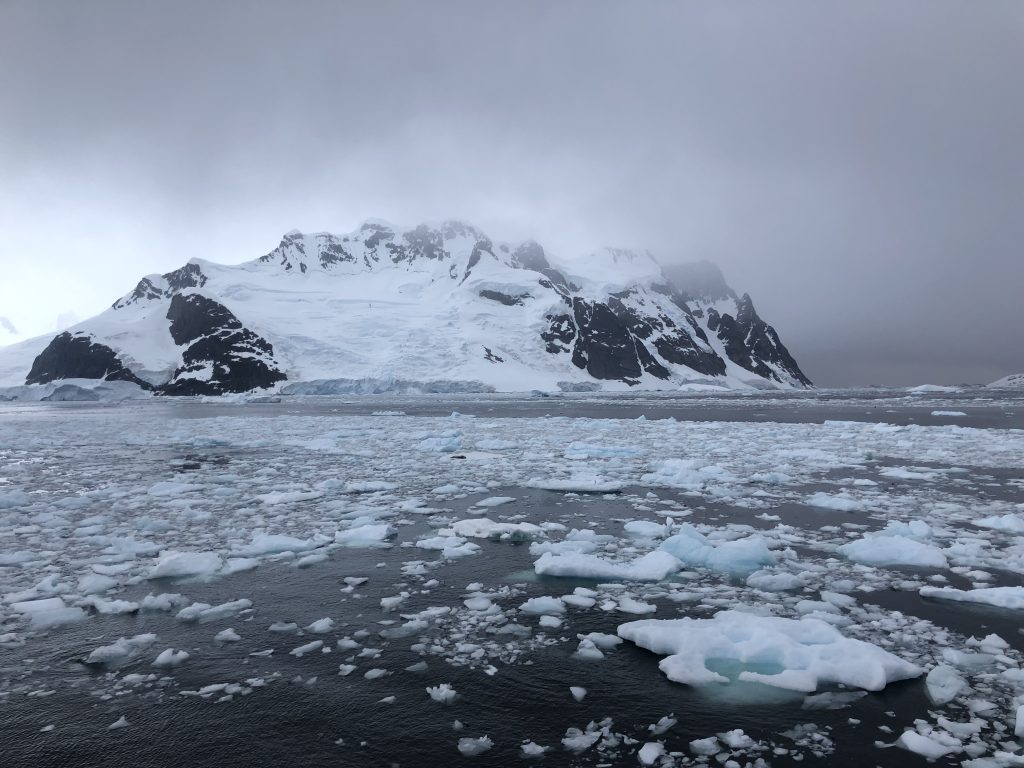
On Day 8, we visited Port Lockroy—set on tiny Goudier Island, just off the coast of Wiencke Island. Once a British research station in the mid-20th century, it’s now a small museum, gift shop, and the famous Penguin Post Office. I’m a big postcard sender, and I still kind of regret not mailing one from there. But honestly, I was a little distracted… by penguins.
They were everywhere. Wandering across the pathways, waddling past the buildings, even nesting under the stairs. It was like stepping into their world—and they didn’t seem to mind us being there.pathways, waddling past the buildings, even nesting under the stairs. It was like stepping into their world—and they didn’t seem to mind us being there.


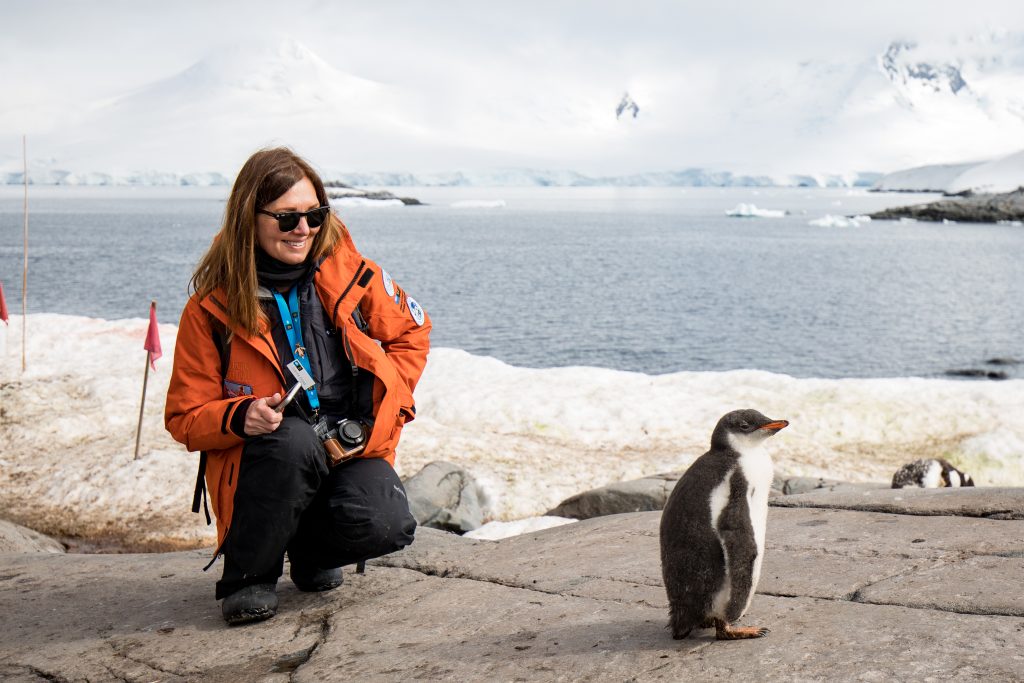
This would be the last time I’d be this close.
I tried to take it all in—the sharp sea air, the crunch of ice underfoot, the ridiculous joy of seeing a penguin waddle right past me—because I knew I’d miss it the second we pulled away.
From Port Lockroy, we cruised south along the west coast of Anvers Island toward the entrance of the Lemaire Channel. Ice or weather must not have been in our favor, because instead of passing through, we turned around near its southern end. The ship then headed north between Anvers and Brabant Islands, back into the Gerlache Strait, where we dropped anchor.
From there, we climbed into Zodiacs and motored out into the still, steel-gray water—only to find ourselves surrounded by humpback whales. Their tails rose and disappeared in slow, deliberate arcs, the sound of their exhalations carrying across the bay. It was one of those rare moments where everything else fell away.
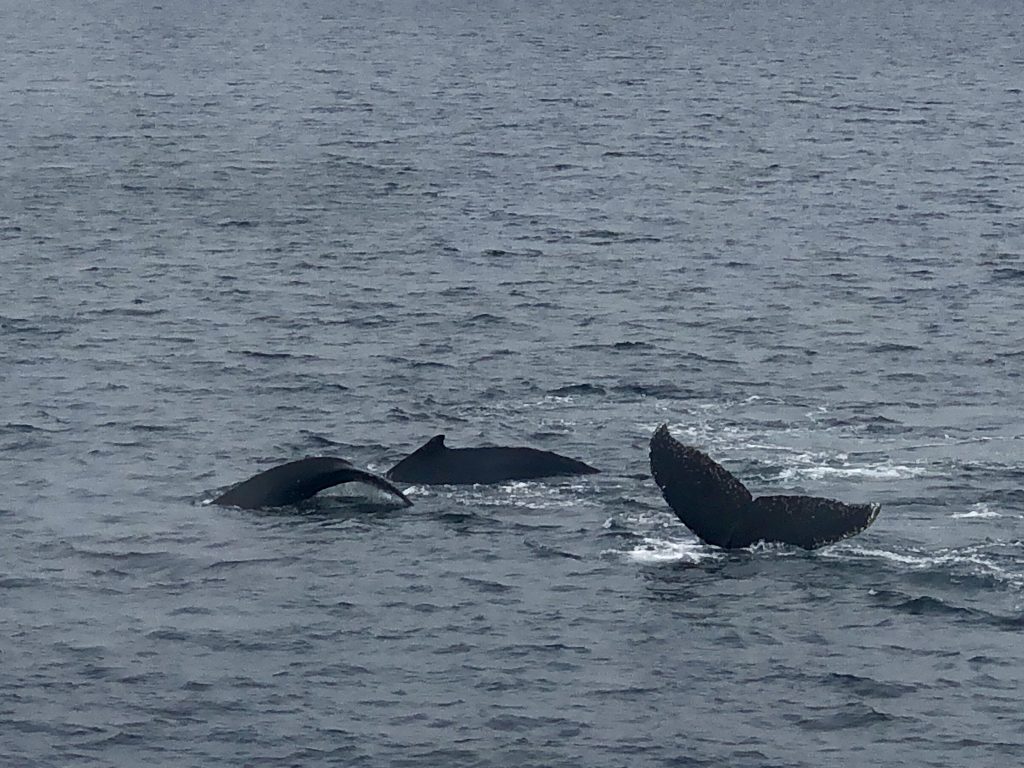
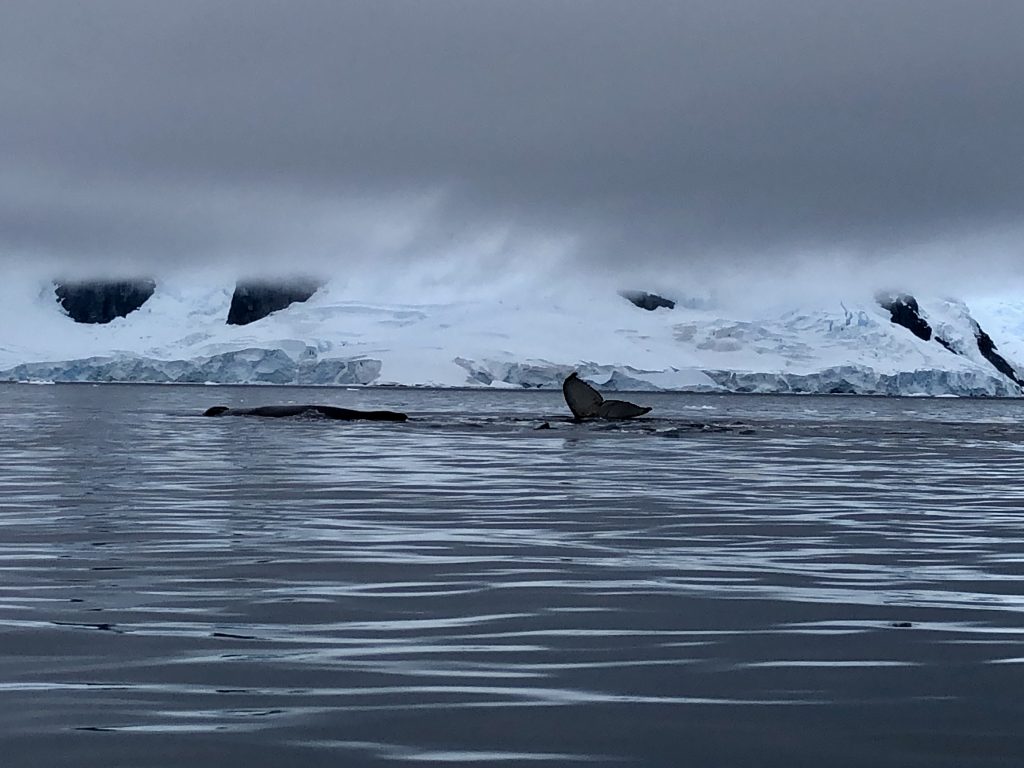
The final two days were at sea as we crossed the Drake Passage back to Ushuaia. The return trip was rougher than our first crossing. Jen and I had just sat down for dinner when the salt and pepper shakers and my water glass started sliding across the table—and I took the cue. Besides, I was beginning to feel a bit queasy by that point. I skipped the rest of the meal and headed straight to bed.
People were bracing themselves as they moved through the ship, gripping thick ropes the crew had strung along the halls—makeshift handholds for when the ship really started to roll.
By the next morning, I was feeling completely fine, and the seas had thankfully calmed. But many passengers were still recovering and chose to stay in their cabins. That evening, for those of us who made it out, we were treated to a special presentation by Jamling Tenzing Norgay, son of the legendary Everest climber Tenzing Norgay. It felt like the perfect way to end a trip full of awe and adventure.
Looking back, Lindblad really did an exceptional job. The staff was friendly and helpful, the food was good and plentiful, and the facilities were great. I can’t complain about much. That said, I’ve learned about a few other expedition options since my trip—like one company that offers a premium package where you can kayak twice a day for longer periods.
I definitely would’ve loved that. Still, for a first trip to Antarctica, this was an incredible experience. I felt safe, well taken care of, and lucky to be there.
Antarctica is unlike anywhere else I’ve ever been. Raw, humbling, and full of surprises. I still can’t believe I did it—that I stood on the seventh continent, watched penguins dive through pink-tinged snow, paddled past glowing blue icebergs, and jumped into a sea of slush.
If you’ve ever dreamed of going—make it happen. Really.
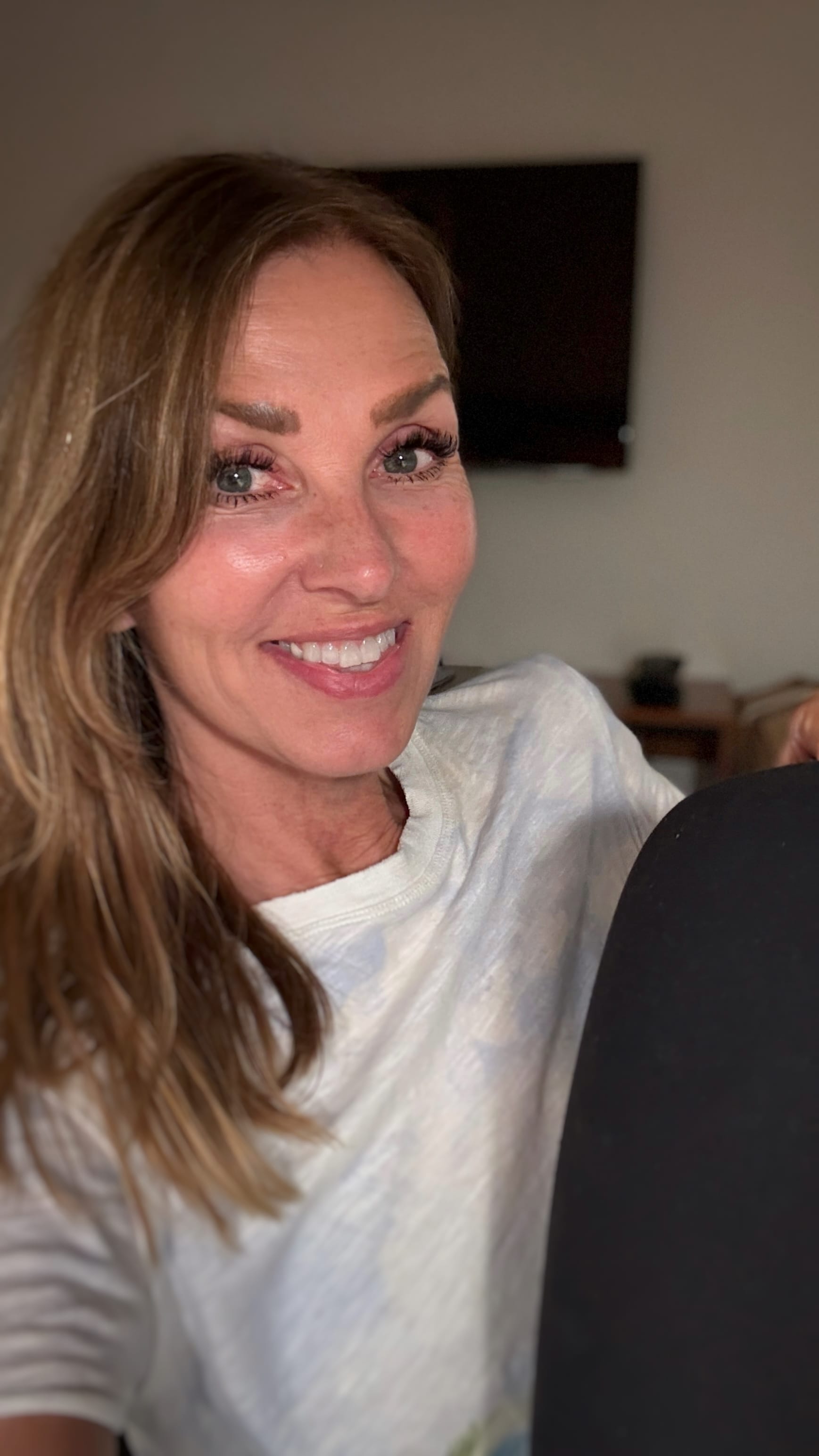
About the Author
Hi, I’m JoAnne—writer, wanderer, and lover of places that surprise me. I’ve traveled to 60+ countries (and counting), usually with a camera in one hand and a notebook in the other. I’m drawn to mosaics, markets, and mountains, and I write to remember what moved me. When I’m not traveling, I’m working on my blog Travels Afoot, trying new creative projects, or planning my next adventure.